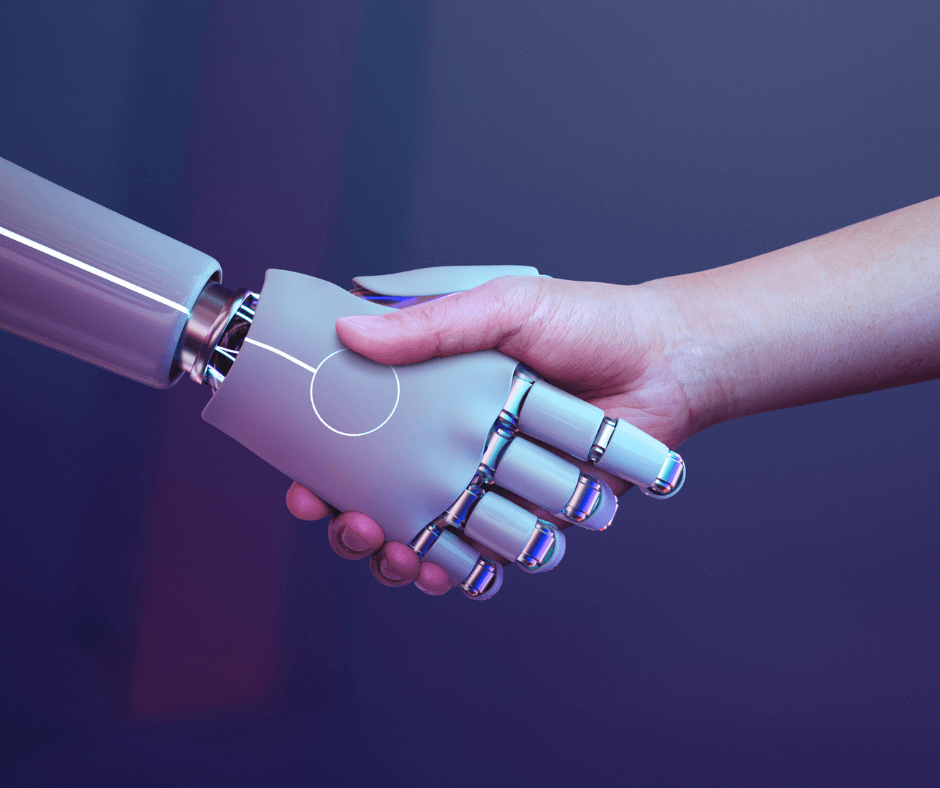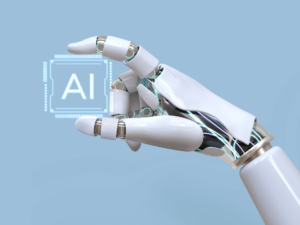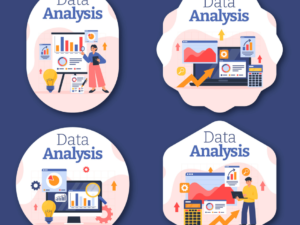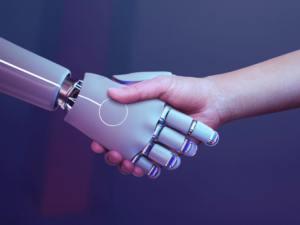AI Chatbots in Customer Service. AI chatbots have transformed customer service. They provide efficient, cost-effective, real-time support to customers.
These advanced AI tools are changing customer interactions. They are also raising service delivery standards.
This article explores AI chatbots. It covers their use in customer service and their benefits to both.
We will explore the mechanics, benefits, and challenges of AI chatbots. Businesses will learn how these tools can improve customer service and satisfaction.
Table of Contents

Understanding AI Chatbots, How AI Chatbots Work in Customer Service
Definition of AI Chatbots
AI chatbots are software that use AI to simulate human conversation. Unlike traditional rule-based systems that follow predefined pathways,
AI chatbots use advanced algorithms to process natural language. They understand user queries and provide relevant responses.
It lets them handle many customer service tasks. These range from answering FAQs to resolving complex issues, all without human help.
Core Technologies Behind AI Chatbots
- Natural Language Processing (NLP): NLP lets chatbots understand spoken or typed human language. It analyzes the meaning and structure of inputs. This way, chatbots can understand requests and respond appropriately.
- Machine Learning (ML): ML is critical for enabling chatbots to learn from interactions. AI chatbots analyze conversation data to find patterns. This improves their predictions. This learning process helps them answer a wider range of questions.
- Predictive Analytics:
- Predictive analytics, common in advanced chatbots, forecast future behavior using past data. In customer service, this allows chatbots to anticipate needs and offer solutions proactively.
- Informational Chatbots: These chatbots provide users with information. They are common in customer service. They answer standard queries about products, services, or company policies.
- Utility Chatbots: These chatbots perform specific functions. They can book appointments, process payments, or manage orders. They are interactive and can execute transactions directly through the chat interface.
- Transactional Chatbots: Transactional chatbots focus on completing tasks. They help with multi-step actions, like changing a flight or returning a buy.
Visual Aid: A diagram showing the flow between a user and an AI chatbot. It highlights how inputs are processed and responses generated.
Affiliate Link: Use the latest AI chatbot from \[Amazon\](https://amzn.to/48hb5Ev) to improve your customer service.
External Link: FFor more on how NLP transforms customer service, see [TechCrunch’s latest article](https://www.techcrunch.com).
Machine Learning in Customer Service
Machine learning in customer service is changing how businesses interact with customers. It automates complex processes and personalizes interactions.
Machine learning algorithms can analyze large datasets. They can predict customer behavior, tailor responses, and improve service. This boosts customer satisfaction and loyalty.
Personalization and Predictive Analytics: A key use of machine learning in customer service is to personalize interactions.It does this using predictive analytics.
Machine learning can predict a customer’s needs by studying past behavior. It can then offer solutions and products tailored to their situation.
This level of personalization enhances the customer experience. It also boosts the effectiveness of marketing campaigns and promotions.
Efficiency and Automation: Machine learning is key to automating customer service tasks.
Machine learning systems can sort and respond to initial customer inquiries. They can also manage follow-up communications. By doing this, they can handle multiple tasks at once. This frees up human agents to focus on more complex issues.
This automation cuts response times and boosts customer service efficiency.
Continuous Improvement: A key benefit of machine learning in customer service is its ability to learn and improve. Every customer interaction provides data. Machine learning algorithms use it to improve their predictions and responses.
Over time, this builds a more accurate, effective customer service system. It can handle many customer needs with little human help.
Using machine learning in customer service streamlines operations. It also makes the service more engaging and personalized.
As technology advances, machine learning will play a bigger role in customer service. It will improve how companies serve their customers.
How AI Chatbots Enhance Customer Service

IImmediate Response Capability
AI chatbots excel at providing instant replies to customer inquiries. This is crucial today. Customers expect fast, efficient service.
AI chatbots can answer a wide range of questions in seconds. This cuts wait times and boosts customer satisfaction.
- 24/7 Availability: AI chatbots can work 24/7 without breaks. Unlike humans, they never need downtime. This constant availability means customer service is not limited to business hours. This is especially beneficial for businesses with global customers.
- Scalability: AI chatbots can handle thousands of interactions simultaneously, making them exceptionally scalable. At peak times, chatbots handle the load without hurting quality. This capability is essential for maintaining service reliability and responsiveness.
Personalization Through AI
AI chatbots go beyond mere automation; they personalize interactions based on customer data. Chatbots can access past chats, purchases, and customer preferences.
They can then tailor conversations to each customer’s needs. This makes the service feel more personal and engaging.
- Contextual Understanding: Advanced AI lets chatbots grasp a conversation’s context. They can suggest and solve issues based on each customer’s situation. This further personalizes the service.
Integration with Business Systems
For best results, AI chatbots must integrate with business systems. These include CRM platforms, databases, and analytics tools. This integration lets chatbots use data from these systems. It improves interactions and support.
- CRM Integration: Integrating with CRM systems gives chatbots access to detailed customer profiles. These include past purchases, interaction history, and preferences. This enables them to offer tailored support and recommendations.
Affiliate Links: Discover powerful AI chatbot solutions that can revolutionize your customer service.
- Check out innovative chatbot technologies on Amazon.
- Explore hosting solutions for AI chatbots at Hostinger
- Find advanced AI tools at competitive prices on AliExpress
External Link: For a deep dive into AI chatbots and customer satisfaction, read this study.
Deployment and Integration of AI Chatbots in Customer Service

Strategic Deployment of AI Chatbots
Deploying AI chatbots effectively requires a strategic approach that aligns with business objectives and customer service goals. Here’s how businesses can ensure the successful deployment of chatbots:
- Define Objectives: Clearly define what you want your AI chatbot to achieve. Are you looking to reduce response times, handle after-hours queries, or perhaps increase sales through product recommendations? Setting clear objectives will guide the configuration and optimization of your chatbot.
- Choose the Right Platform: Select a chatbot platform that suits your business needs and technical capabilities. Consider factors such as ease of use, customization options, integration capabilities, and support provided by the platform.
- Develop a Comprehensive Knowledge Base: A well-rounded knowledge base is crucial for the chatbot’s performance. Populate it with FAQs, product information, troubleshooting guides, and other relevant content that your chatbot will need to assist customers effectively.
Integration with Existing Systems
Seamless integration with existing business systems such as CRM software, order management systems, and marketing tools is essential for maximizing the utility of AI chatbots:
- CRM Integration: Connecting chatbots with CRM systems enables them to access customer data, providing insights that allow for more personalized interactions. This integration helps chatbots offer solutions and information tailored to the individual customer’s history and preferences.
- Analytics Tools: Integrating chatbots with analytics tools allows businesses to track interactions and outcomes. This data is crucial for understanding customer needs, improving chatbot responses, and measuring the impact of chatbots on customer service.
- Continuous Learning and Improvement: AI chatbots should not be set and forget tools. They require ongoing monitoring and training to refine their algorithms and expand their knowledge base. Regularly review interaction logs to identify areas for improvement and update the AI model accordingly.
Training the Chatbot
Training an AI chatbot involves not only initial setup but also ongoing adjustments based on customer interactions.
- Initial Training: Use historical customer service data, if available, to train your chatbot. This can include chat logs, email exchanges, and call transcripts to help the chatbot learn typical customer queries and appropriate responses.
- Machine Learning: Utilize machine learning techniques to enable the chatbot to learn from each interaction and improve over time. The more data the chatbot processes, the better it becomes at handling a wide range of customer inquiries.
- User Feedback: Incorporate user feedback mechanisms to gather insights directly from users about their chatbot interactions. This feedback is invaluable for making targeted improvements.
Affiliate Links: Enhance your customer service capabilities with these AI solutions:
- Find powerful AI chatbots on Amazon
- Optimize your AI solutions with hosting from Hostinger
- Access affordable AI technology on AliExpress
External Link: For practical insights into integrating AI chatbots into existing business systems, visit this detailed guide.
Continuous Chatbot Training
Continuous chatbot training is vital. It keeps AI customer service solutions effective and improves them.
As customer preferences change, so must the algorithms that power chatbots.
This training keeps chatbots updated on trends, vocab, and service expectations.
Adapting to New Data: Chatbots must use new customer data to train their models. Each customer query and reply offers insights. They help improve the chatbot’s understanding and responses.
By analyzing new data, chatbots can learn from mistakes. They can better understand customer intent and adapt to new slang.
Improving Accuracy and Personalization: Training will improve the chatbot’s responses to customer inquiries. Regular updates to its algorithms are needed.
This process is key for personalizing interactions. It lets chatbots remember customers’ preferences and past chats. This leads to more relevant, engaging conversations.
Feedback Loops: Implementing feedback mechanisms is a vital component of continuous chatbot training. Customers can rate their chatbot interactions. This feedback can help train the bot.
Service agents can conduct regular reviews of chatbot transcripts. This will help improve the bot. It ensures the bot learns from real use, not just theory.
By training their chatbots, businesses make them better over time. This keeps their chatbot services from stagnating.
This commitment to improvement boosts customer satisfaction. It also helps the chatbot handle complex, sensitive issues like a human.
Challenges and Solutions in Implementing AI Chatbots
Understanding the Limitations of AI Chatbots
AI chatbots are powerful tools. But, they have limits. If not managed, these limits can hurt their effectiveness.
- AI chatbots sometimes struggle to grasp context and subtleties in human communication. This can lead to incorrect responses and customer frustration.
- Chatbots often can’t handle complex customer service issues. These require human help.
Privacy and Security Concerns
Given that chatbots handle sensitive customer data, ensuring privacy and security is paramount.
- Data Protection: Implement robust data encryption and access controls to protect customer information.
- Compliance: Your chatbot must follow data protection laws, like GDPR, when operating globally.
AI Chatbot Privacy Concerns
As businesses deploy chatbots for customer interactions, privacy concerns are rising.
We must protect the privacy of personal data in these AI systems. This is key to building user trust and meeting legal standards.
Data Sensitivity and Protection: A key concern about AI chatbots is their handling of sensitive data. Chatbots often process personal data. This includes names, addresses, and payment info. Sometimes, it even includes health data.
These systems must have strong security. They should use end-to-end encryption and secure data storage. They stop unauthorized access and protect private customer data from breaches.
Compliance with Regulations: Another key aspect is adhering to privacy laws. These include the EU’s GDPR, California’s CCPA, and other regional regulations.
These regulations require strict data handling. They mandate user consent before collecting data. Users must also be able to view, edit, or delete their information.
Compliance is not just about avoiding penalties. It’s also about building trust with customers.
Businesses must be transparent about their chatbots. They must explain how they collect, use, and store data. This will help ease privacy concerns. It’s crucial to inform users about the chatbot’s data collection and use.
Also, giving users control over their data can help. Options to opt-out of data collection or delete their info can ease privacy worries.
By addressing AI chatbot privacy concerns, companies can improve customer service. They can do this without compromising user privacy.
Protecting personal data and being transparent is key. They build trust in AI. They’re also regulatory requirements.
Solutions to Overcome These Challenges
- Hybrid Customer Service Model: Use AI chatbots and human agents for complex queries. This approach ensures timely escalation and resolution of issues.
- Continuous Training and Updates: * Regularly update the chatbot’s algorithms and knowledge base. This will improve its understanding and context. Transparency with Customers: Clearly tell customers when they are using a chatbot. Provide options to speak with a human if needed.
Best Practices for AI Chatbot Success
To get the most from AI chatbots in customer service, follow these best practices.
Regular updates and maintenance
- Ongoing Training: Continuously update the chatbot with new data. Train its algorithms to adapt to changing customer behaviors and preferences.
- System Checks: Regularly test and maintain the chatbot. Ensure it works and integrates with other business systems.
Effective User Feedback Collection
- Surveys and Polls: After chats, ask customers to rate their chatbot experience in a quick survey. This data is invaluable for identifying areas of improvement.
- Analytics Tools: Use analytics to monitor chatbot performance. Track the resolution rate, customer satisfaction, and interaction patterns.
Enhancing Human-Agent Collaboration
- Agent Training: Teach human agents to work with chatbots. Include when to take over from the chatbot.
- Seamless Handoffs: If needed, chatbots must transfer customers to human agents. They must not lose the chat’s context.
Affiliate Links: Optimize your customer service operations with these cutting-edge AI tools:
- Explore AI chatbot options on Amazon
- Secure reliable hosting for your AI chatbots at Hostinger
- Discover cost-effective AI tools at AliExpress
External Link: This guide has best practices for AI chatbot implementation.

FAQ About How AI Chatbots Work in Customer Service
What are the primary capabilities of AI chatbots in customer service?
AI chatbots in customer service use natural language processing. They handle inquiries, offer 24/7 support, and manage many chats at once. They also personalize experiences using data analysis.
Can AI chatbots handle all types of customer service inquiries?
AI chatbots are great for general inquiries and routine tasks. But, complex issues may still need human help.
Hybrid systems use AI chatbots and human agents to boost efficiency.
How do I ensure the privacy and security of customer data when using AI chatbots?
To protect customer data, your AI chatbot must comply with data protection laws, like GDPR.
Use strong security measures. Encrypt data, store it securely, and audit it regularly.
What should I do if the AI chatbot cannot resolve a customer’s issue?
Implementing a seamless handoff protocol is crucial. Your AI chatbot must know its limits. It should transfer the chat to a human agent. It must not lose context or make the customer repeat info.
How often should AI chatbots be updated or trained?
AI chatbots should continuously learn and update to improve their accuracy and functionality.
This includes retraining the models with new data, refining algorithms based on feedback, and updating the knowledge base with the latest products and policies.
Conclusion on How AI chatbots work in customer service
AI chatbots are a big advance in customer service. They help businesses improve interactions, streamline operations, and personalize customer engagement.
Organizations can boost customer service efficiency. They should:
- Understand AI tools.
- Integrate them with human agents.
- Follow best practices for deployment and maintenance.
As technology evolves, AI chatbots will grow more sophisticated. They are now vital for a competitive edge in customer service and satisfaction.




